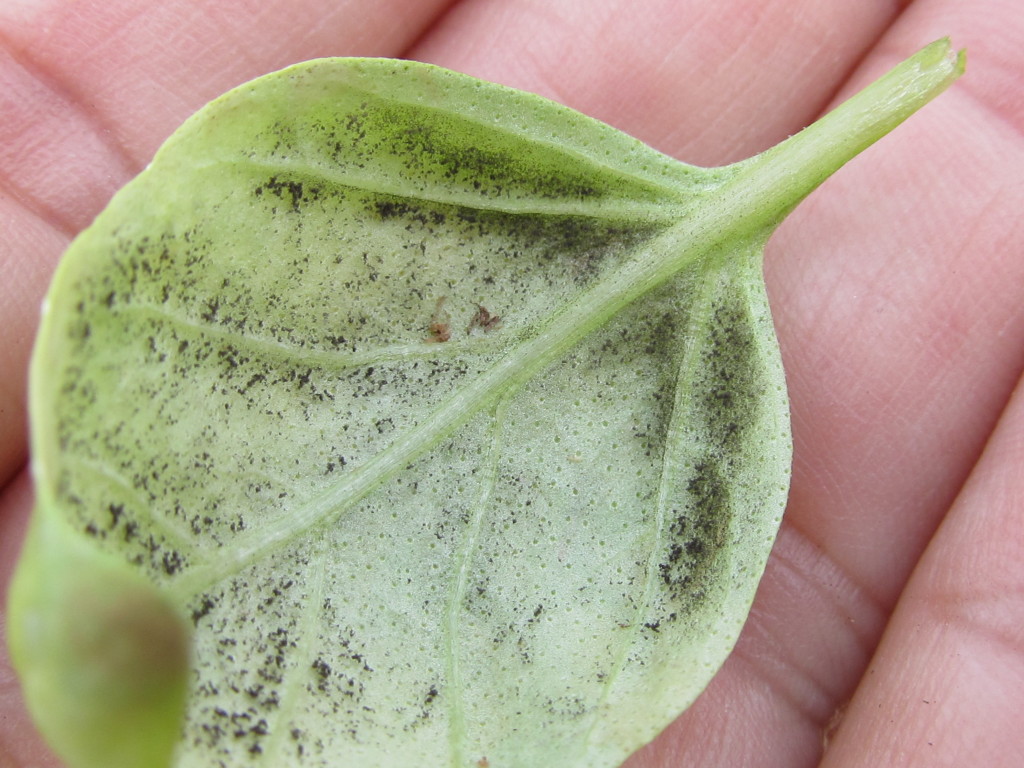
An Epidemic of Epidemics
It seems like the explosion of new diseases has accelerated in the past 10 years or so. Marge thinks we are being tested. Having mastered the ABCs of plant disease, we are now into the exam period, to see if we can still help people protect their plants against diseases when the problems are being thrown at them faster and more furiously than ever before.
Rust on daylily took a mere year from the first find in the United States in 2000 to widespread occurrence throughout the country by the fall of 2001. A few years later, in 2006, we saw gladiolus rust reported for the first time in Florida, California and Minnesota, but gladiolus rust has been less serious since the first year or so when it was found. In California it was found in small "mom and pop" cut flowers and not large commercial operations as it had been in Florida. It has been most problematic in Florida (it was seen there as late as mid 2012). So why did daylily rust spread so far and wide, and not the gladiolus rust?
There are many daylily plants shipped around the country each year to retail garden centers for home gardener consumption. Daylilies are also grown by members of the American Hemerocallis Society — which listed 7,769 members internationally in 2011. I think all those daylily lovers quickly distributed the rusty plants because the disease was not on their radar and the symptoms escaped their notice at first. After the new threat was discovered, the Society was a great educational channel for telling everyone how to recognize the rust and avoid it. The North American Gladiolus Council provides a similar home for gladiolus afficianados, but gladiolus are not commonly stocked for garden centers. The corms, rather than the plants, are distributed at retail and by mail order. Rust spores can probably hitchhike on corms, but there is far more opportunity for rust inoculum to move on an entire plant (like a daylily).
Daylily rust was spread so rapidly by plant shipment that no serious consideration was ever given to trying to set up quarantines. Daylily rust is much more common in the Southeastern and Western states than the Northeastern states. In the early 2000s Margery would see a couple of cases a year, most of them intercepted by plant health inspectors. Since then they have rarely been found. In contrast, it is alive and well in the southern and western United States. Ann sees it in the landscapes, garden centers and perennial nurseries all of the time. If the gardeners are sometimes part of the distribution of new diseases, how can we stop a new disease from rapidly spreading throughout the United States and Canada?
Maybe we should start an ornamental plant disease alert page on Facebook. Actually, ANLA (American Nursery and Landscape Association) has pretty much done that for the green industry: they have set up Knowledge Centers for boxwood blight and impatiens downy mildew (www.anla.org) and now rose rosette disease. The American Floral Endowment has extensive resources on impatiens downy mildew (www.endowment.org). But reaching the home gardeners will be a bit harder.
Brand new diseases cannot be predicted. Why didn't the P. ramorum (Phytophthora ramorum, agent of Ramorum Blight and "Sudden Oak Death") end up establishing beyond the West Coast? It was certainly delivered everywhere in shipments of woody ornamentals. Ramorum blight disease is very much limited by environment, making its establishment outside the Pacific Coast less likely than a disease like daylily rust where the environmental conditions are much wider and found in many parts of the United States. That is not necessarily reassuring since it is always possible that this Phytophthora may cut loose some wet year and ravage the East Coast. Researchers are finding that it persists in rivers and ponds.
How do you think these dangerous new diseases are getting introduced to the United States?
Since we started in this industry in 1979, many pathogens, old and new, are introduced on propagative materials. This seems to be the case clearly on some crops, while in other cases the pathogens are spreading via air currents over large distances — especially rust diseases. Sometimes diseases seem to spread quickly, but other times they have been slow to show up. The new Cylindrocladium/Calonectria blight on boxwood, for example, was discovered in England in 1994 but wasn't seen in the United States until 17 years later.
Basil downy mildew was originally reported in 1933 in Uganda. The current outbreak was first found in Switzerland in 2001 but reached Florida only in 2007. Basil with downy mildew could have gotten into the United States easily via imports of packages of fresh basil shoots coming in to supermarkets from other countries. There was no guarantee the basil greens were free of downy mildew — and this pathogen makes oospores Ñso now this disease may be with us permanently. There are clues in the scientific literature we can find about a new disease starting, but reports take a long time to be published — kind of our version of due process. We could have predicted basil downy mildew and box blight and should have been watching for them.
We need more connections between plant specialists and disease specialists — forming a sort of watch group. This should be possible with the internet. There is now (since 2002) a formal federal disease reporting system, the NPDN (National Plant Disease Network), but what would work better for us would be an Ornamentals Disease Watch. Box Blight was handled beautifully by North Carolina and Connecticut university and experiment station personnel. They used the internet really well to get information out to others, and it was a big help!
An Epidemic of Epidemics









 Video Library
Video Library 


















